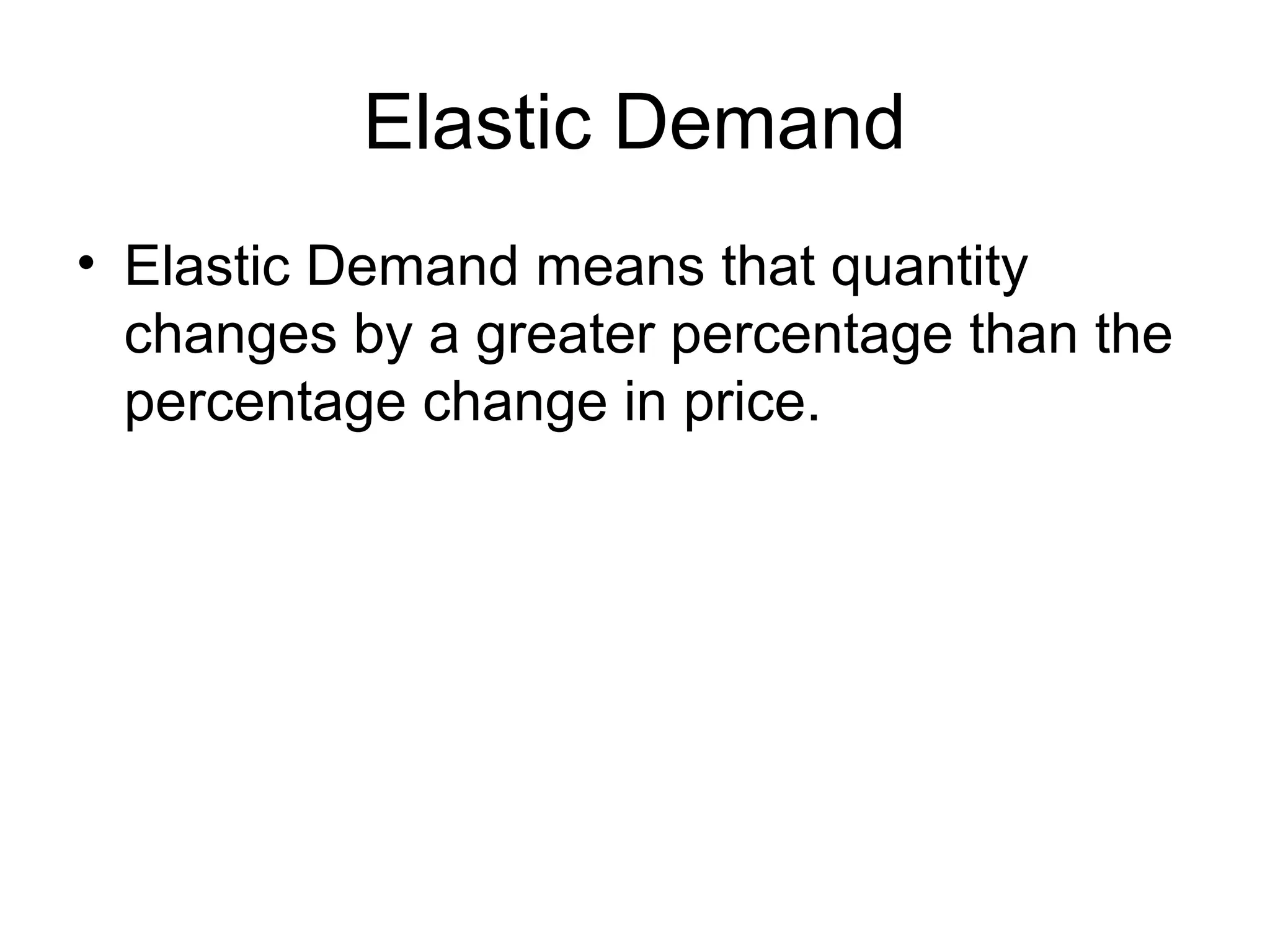The document discusses the concept of elasticity in economics. It defines elasticity as a measure of how responsive one variable is to changes in another variable. Price elasticity of demand measures the responsiveness of quantity demanded to changes in price. Demand is elastic if a 1% change in price leads to a greater than 1% change in quantity demanded, and inelastic if the change in quantity is less than 1%. Factors like availability of substitutes, importance in spending, and time period impact how elastic demand is.















































